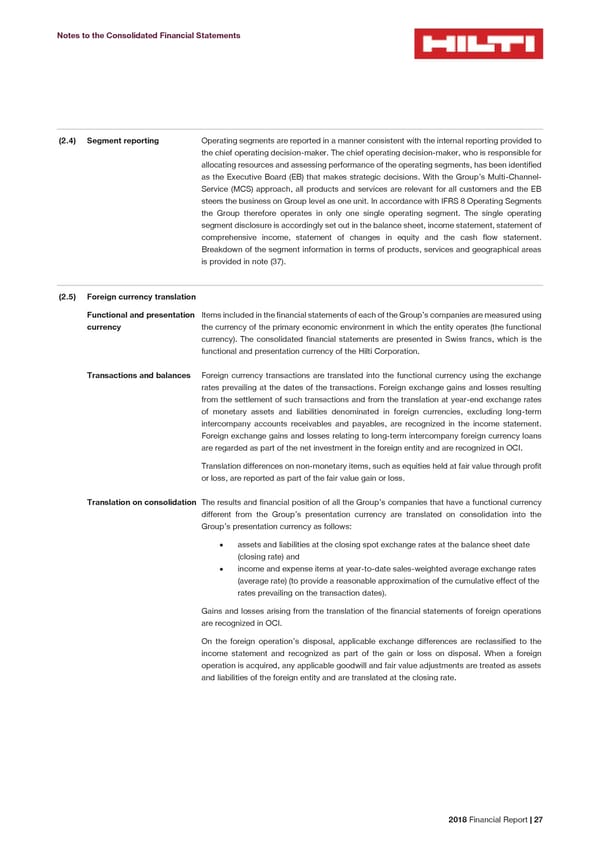Notes to the Consolidated Financial Statements Segment reporting Operating segments are reported in a manner consistent with the internal reporting provided to (2.4) the chief operating decision-maker. The chief operating decision-maker, who is responsible for allocating resources and assessing performance of the operating segments, has been identified as the Executive Board (EB) that makes strategic decisions. With the Group’s Multi-Channel- Service (MCS) approach, all products and services are relevant for all customers and the EB steers the business on Group level as one unit. In accordance with IFRS 8 Operating Segments the Group therefore operates in only one single operating segment. The single operating segment disclosure is accordingly set out in the balance sheet, income statement, statement of comprehensive income, statement of changes in equity and the cash flow statement. Breakdown of the segment information in terms of products, services and geographical areas is provided in note (37). (2.5) Foreign currency translation Functional and presentation Items included in the financial statements of each of the Group’s companies are measured using currency the currency of the primary economic environment in which the entity operates (the functional currency). The consolidated financial statements are presented in Swiss francs, which is the functional and presentation currency of the Hilti Corporation. Transactions and balances Foreign currency transactions are translated into the functional currency using the exchange rates prevailing at the dates of the transactions. Foreign exchange gains and losses resulting from the settlement of such transactions and from the translation at year-end exchange rates of monetary assets and liabilities denominated in foreign currencies, excluding long-term intercompany accounts receivables and payables, are recognized in the income statement. Foreign exchange gains and losses relating to long-term intercompany foreign currency loans are regarded as part of the net investment in the foreign entity and are recognized in OCI. Translation differences on non-monetary items, such as equities held at fair value through profit or loss, are reported as part of the fair value gain or loss. Translation on consolidation The results and financial position of all the Group’s companies that have a functional currency different from the Group’s presentation currency are translated on consolidation into the Group’s presentation currency as follows: • assets and liabilities at the closing spot exchange rates at the balance sheet date (closing rate) and • income and expense items at year-to-date sales-weighted average exchange rates (average rate) (to provide a reasonable approximation of the cumulative effect of the rates prevailing on the transaction dates). Gains and losses arising from the translation of the financial statements of foreign operations are recognized in OCI. On the foreign operation’s disposal, applicable exchange differences are reclassified to the income statement and recognized as part of the gain or loss on disposal. When a foreign operation is acquired, any applicable goodwill and fair value adjustments are treated as assets and liabilities of the foreign entity and are translated at the closing rate. 2018 Financial Report | 27
 2018 Financial Report Page 28 Page 30
2018 Financial Report Page 28 Page 30